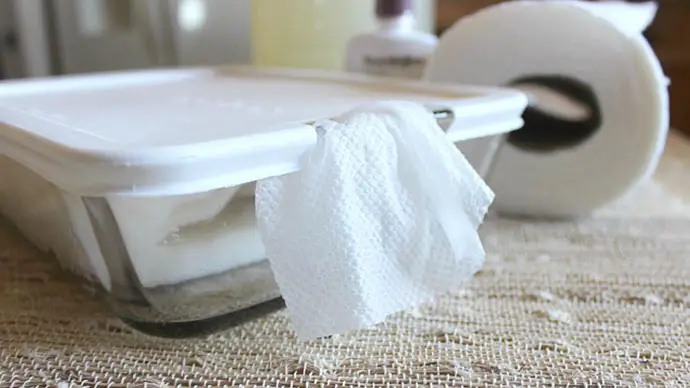As your baby grows and develops, transitioning to solids is an exciting milestone. It’s important to introduce a variety of foods, textures, and flavors to ensure they receive all the necessary nutrients. Here are some dairy free baby led weaning recipes that are easy to prepare and packed with nutrition to help you get started.

First up is sweet potato wedges. Preheat your oven to 400°F and cut sweet potatoes into wedges. Toss them in olive oil and bake for 25-30 minutes. Not only are sweet potatoes an excellent source of vitamins A and C, but they also have a naturally sweet taste that your baby will love.
Another great option is avocado toast. Toast a slice of whole-grain bread and spread mashed avocado on top. Avocados are full of healthy fats, fiber, and vitamins, making them a perfect first food for your little one.
If you’re looking for a protein-packed recipe, try black bean and sweet potato burgers. Blend black beans and sweet potatoes together and form into small patties. Bake for 20 minutes and serve. These burgers are an excellent source of protein and fiber.
Introducing dairy to your baby can be tricky. It’s important to do it safely and gradually. Start by introducing small amounts of dairy and pay attention to any adverse reactions. You may want to wait until your baby is at least nine months old before introducing dairy. Yogurt and cheese are good options to start with, as they contain less lactose than milk.
Key Takeaways:
- Dairy free baby led weaning recipes provide a variety of flavors and textures for your baby’s first foods.
- When introducing dairy, start with small amounts and pay attention to any adverse reactions.
- Other common allergens to be aware of during baby led weaning include eggs, wheat, soy, peanuts, tree nuts, fish, and shellfish.
- Preventing choking during baby led weaning involves appropriate food sizes and textures, constant supervision, and first aid techniques like infant CPR.
- Offer a variety of foods, textures, and flavors, and follow your baby’s developmental cues to make baby led weaning a success.
Introducing Dairy Safely to Your Baby
As you begin to introduce solid foods to your baby, you may be wondering when and how to introduce dairy products. It’s important to understand your baby’s digestive system and any potential allergies to avoid any adverse reactions. Here are some tips on how to introduce dairy safely:
Timing
It’s recommended to wait until your baby is at least 6 months old before introducing dairy products. Breastmilk or formula will provide all the necessary nutrients for your baby prior to this age. Consult with your pediatrician on the appropriate timing for your little one.
Potential Allergies
Some babies may be allergic to cow’s milk or other dairy products. Symptoms of an allergy may include hives, vomiting, diarrhea, or difficulty breathing. Consult with your pediatrician if you suspect your baby has an allergy. In some cases, your pediatrician may recommend allergy testing.
Gradual Introduction
When introducing dairy products, start with small amounts and gradually increase over time. This will give your baby’s digestive system time to adjust and minimize any adverse reactions. You can start with products that are lower in lactose, such as yogurt or cheese, before introducing milk.
Monitoring and Observation
As you introduce dairy products, keep a close eye on your baby for any signs of discomfort or allergic reaction. Observe your baby’s behavior, bowel movements, and any physical symptoms. If you suspect any adverse reaction, stop the introduction of dairy products and consult with your pediatrician.
By following these tips on introducing dairy safely, you can help your little one enjoy a variety of nutritious foods while minimizing any potential allergic reactions.
Managing Other Allergens During Baby Led Weaning
While dairy is a common allergen, there are other allergens you should be aware of when practicing baby led weaning. These include eggs, wheat, soy, peanuts, tree nuts, fish, and shellfish. As you start to introduce these foods to your baby, it’s important to do so safely to help identify any potential allergies.
| Allergen | Introduction Age | How to Prepare |
|---|---|---|
| Eggs | 6 months | Scrambled, boiled, or baked |
| Wheat | 6 months | Offer bread, pasta, or crackers |
| Soy | 6 months | Offer tofu or edamame |
| Peanuts | 6 months | Offer smooth peanut butter or peanut powder mixed with pureed fruit or veggie |
| Tree nuts | 6 months | Ground or pureed into a smoothie or sauce |
| Fish | 6-9 months | Baked or boiled and flaked into small pieces |
| Shellfish | 8-9 months | Baked or boiled and flaked into small pieces |
When introducing allergenic foods, it’s best to offer them one at a time and wait at least 3 days before introducing another new food. This will help you identify any potential allergies and allow you to react quickly.
If you are concerned about your baby having an allergic reaction, speak with your pediatrician and have an emergency plan in place.
Choking Prevention and Safety Tips
Introducing solids to your baby is an exciting milestone, but it’s important to be aware of potential choking hazards. By taking precautions and following some key tips for safe baby-led weaning, you can help ensure your child’s safety while they explore new flavors and textures.
Be Mindful of Food Size and Texture
When offering food to your baby, make sure it’s an appropriate size and texture for them to handle and swallow. Foods should be cut into small pieces that are easy for your baby to grasp and gum, and should be soft enough that they won’t pose a choking hazard. Avoid foods that are round and small, such as grapes or cherry tomatoes, which can get stuck in your baby’s throat.
Supervision is Key
Always supervise your baby when they’re eating, and make sure they’re seated upright in a high chair or similar device. This will help prevent choking and ensure that your baby isn’t distracted by their surroundings. Avoid feeding your baby while they’re lying down or in a car seat, as they’re more likely to choke in these positions.
Be Prepared with First Aid Techniques
It’s important to be prepared for potential choking incidents. Learn how to perform infant CPR and keep a first aid kit nearby. If your baby is choking, act quickly by holding them face down on your forearm and delivering five sharp blows to their back, between their shoulder blades. If this doesn’t work, turn them over and give five chest thrusts.
Create a Safe Feeding Environment
Make sure your baby’s feeding area is free from distractions and potential hazards, such as small objects that could be ingested. Also, make sure that any older siblings or pets are well-behaved and aren’t likely to disrupt your baby’s mealtime.
Tips for Successful Baby Led Weaning
Introducing your baby to solid foods through baby led weaning can be an exciting and rewarding experience. Here are some tips to make it successful:
- Introduce a variety of foods: Offering a variety of foods will help develop your baby’s palate and ensure they receive a wide range of nutrients.
- Experiment with textures and flavors: Your baby may prefer certain textures and flavors over others, so it’s important to try different options to find what they enjoy.
- Make food visually appealing: Presentation can make a difference. Cut fruits and vegetables into fun shapes or arrange them in colorful patterns to catch your baby’s attention.
- Look for developmental cues: Your baby will show signs of readiness by reaching for food or being able to sit upright without support. Watch for these cues to know when to introduce new foods.
- Offer alternatives: If your baby doesn’t seem to like a particular food, offer alternatives that are similar to the rejected food, so they still receive the same nutrients.
- Don’t forget about snacks: Snacks can be a great way to introduce new foods or flavors. Offer healthy options like sliced fruit or baby carrots between meals.
By following these tips, you can ensure a successful baby led weaning experience and help your little one develop healthy eating habits.
Conclusion
Congratulations on embarking on the exciting journey of baby led weaning with your little one! By following the dairy free baby led weaning recipes we’ve outlined and incorporating the tips and techniques discussed, you can ensure a smooth and successful transition for your baby.
Remember to introduce dairy to your baby safely, with a gradual introduction to minimize any potential adverse reactions. Be aware of other common allergens, such as eggs, wheat, soy, peanuts, tree nuts, fish, and shellfish, and learn how to introduce them safely.
To prevent choking during baby led weaning, make sure to offer appropriate food sizes and textures, constantly supervise your baby, and learn essential first aid techniques like infant CPR. Creating a safe feeding environment is crucial for your baby’s well-being.
Finally, to make baby led weaning a success, offer a variety of foods, textures, and flavors, experiment with presentation, and recognize your baby’s developmental cues. Don’t be afraid to offer alternatives and snacks that your baby will enjoy.
Enjoy this special time with your little one and watch them develop healthy eating habits that will last a lifetime!




